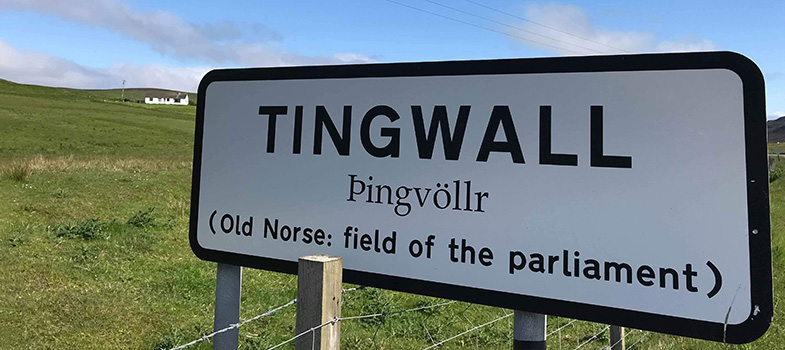7.3 Scottish Crafts
Scottish indigenous crafts are crafts that have their origins in the cultures of Scotland. Other terms often used to describe them include heritage, traditional and folk art. The Scottish Indigenous Crafts website [Tip: hold Ctrl and click a link to open it in a new tab. (Hide tip)] , run by the Really Interesting Objects initiative, offers useful definitions of these terms, which are added to by Scottish Indigenous Craft practitioners or initiative members themselves.
“What are Scottish Indigenous Crafts?
Scottish indigenous crafts are those which represent skills and trades originally acquired and practiced out of necessity. They are a product of functional life with an identifiable style specific to Scotland. Historically they reflect locally available materials and resources and are part of Scottish regional and national cultural identity. They can be expressive and innovative. They are sometimes described as folk art, rural craft, traditional craft and heritage craft.”
Activity 6 
Part 2
Taking a closer look at the items in the list from Part 1 of this activity, which do you think are Scots words? Highlight these now.
Discussion
Please note: The term taatit is not listed in the DSL, although it is a Scots term. It is a specific term used in Shetland in connection with ‘rug’. Taatit rugs are the pile bedcovers traditionally used in Shetland. The Shetland heritage website provides information on a taatit rug exhibition in 2015.
Part 3
Now use the DSL to look up the words you highlighted in Part 2 and add these to your own glossary of Scots vocabulary and phrases.
Clearly craft industries of Scotland cover an impressive range of products and areas, and they make up an important component of the Scottish economy and contribute in a major way to the development of the Scottish tourist industry. A survey carried out on behalf of Craft Scotland and other craft agencies in the UK revealed that Scottish craft contributes over £70 million to the economy, from an estimated 3,350 Scottish craft makers. The summary of the survey provides an interesting insight into who the people are that consider themselves crafts people of Scotland today:
- Craft careerists: who committed to the idea of craft as a career and started their businesses shortly after finishing their first (or second) degrees in a craft-related subject. (38.8%)
- Artisans: who do not have academic degrees in the subject but nevertheless have made craft their first career. (12.2%)
- Career changers: who began their working lives in other careers before taking up craft as a profession, often in mid-life. (31.6%)
Returners: who trained in art, craft or design, but followed another career path before ‘returning’ to craft later on. (17.5%)
(Craft in an Age of Change: Summary Report, 2012, p. 24.)
![]()
When it comes to the materials used in Scottish crafts, it is interesting to compare the findings of the Creative Scotland study as opposed to the list of Scottish crafts posted on the Scottish Indigenous Crafts website from Activity 6.
Below is the ranking of the most commonly used materials cited in the Crafts in an age of change: Summary report:
The five most commonly used materials in current Scottish crafts
- Metal and mixed materials in Jewellery – 23.0%
- Textiles (exc. weaving) – 21.1%
- Ceramics – 18.3%
- Wood (exc. furniture) – 12.2%
Glass 11.1%
(2012, p. 24.)
You see that there are some materials that are not mentioned at all in the Scottish Indigenous Crafts website list, such as ceramics and glass. On the other hand, the range of materials in the Scottish Indigenous Crafts website list is much wider and includes more unusual materials such as horn or ropes which are made from hemp.
Why do you think there might be such a difference?
Might this be an issue of perceptions?
Can this have something to do with what some might consider ‘real crafts’ versus more creative or ‘arty’ crafts?
Do you think the items listed as indigenous crafts might be considered ‘every day/traditional goods’ as opposed to more innovative and in some cases ‘luxury’ products mentioned by the makers in the Creative Scotland study?
Could there be other reasons, i.e. the contributors to the Scottish Indigenous Crafts website list do not engage with crafts as a career?
If you want to find out more about makers, materials, crafts and interesting items, do explore the Craft Directory on the Craft Scotland website, which makes for a compelling read.
7.2 The Monarch of the Glen
